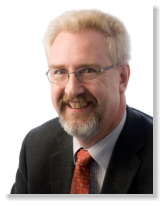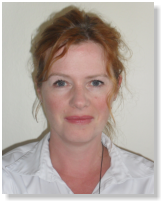









Speaker information will be updated regularly.
‘Bullying in the Workplace’
Nigel Latta
Nigel is a registered clinical psychologist and author. He was born and raised in
Oamaru and spent his high school years at Waitaki Boys High School. He then
went on to Otago University, where he completed an MSc in Marine Science.
Following that, he went to Auckland where he trained as a clinical psychologist
and worked there for a period of some seventeen years in a number of agencies
- Drug and Alcohol rehabilitation, Sex Offender Treatment Programmes, Family
Therapy agencies, Child Youth and Family, Probation Services, as well as in private practice.
Nigel has just returned to Auckland, with his wife and 2 children, after having spent the past 6
years in Dunedin. He currently works as a clinical psychologist in private practice and continues to
consult with organisations and agencies thoughout the country working mainly with children and
young people, as well as adult forensic work. He lectures on a number of senior courses at the NZ
Police College and is a frequently requested speaker at conferences and events for schools and
organizations.
Vicky Warwick
Vicky originally trained and qualified in Lancashire England. She is currently
employed at Fremantle Hospital and Health Service Western Australia were she
has worked as a Registered Nurse within the operating suite and currently
holds the position of Staff Development Educator for Perioperative Services and
Course Coordinator for the Graduate Diploma in Perioperative Nursing.
She holds a Graduate Certificate in Health Science for completing the
Perioperative Nurse Surgeon’s assistant (PNSA) Course in 2002 and in 2006
completed her Masters in Nursing through Curtin University Western Australia.
Vicky has been an active member of the Operating Room Nurses Association
(ORNA)of Western Australia since 2000 and is the current President of the Australian College of
Operating Room Nurses (ACORN) for the 2010 – 2012 ACORN Board.
Vicky is very passionate about perioperative nursing, how training is undertaken and perioperative
practice governed.
Vicky is married with two young children and enjoys spending her free time with her family.
Abstract
Changing roles within the perioperative arena: Are registered nurses a dying breed or are they
victims of their own ambitions to be more specialised
The perioperative environment is a sophisticated and technical world. The people that work within it
need to be technically minded and have the ability to work together as a team to ensure optimal
safe outcomes for the patient.
The roles within this environment have always been primarily nursing only, but as time has
progressed and an inability to retain or recruit nurses into the perioperative environment, new roles
have emerged to take on these positions. Titles that have begun to appear include:
— Technicians
— Surgical assistants
— Advanced Perioperative Nurses
— Operating Department Practitioners
These are but a few that are now being recognised within the perioperative environment. So this
now brings new challenges for the registered nurse and the organisations that regulate practice. Do
registered nurses now embrace them or go into battle to retain what was rightfully theirs
Are registered nurses just being precious about letting go of these roles or is there real implications
for patient safety and outcomes.
This paper will endeavour to address these issues and give some insight into how the perioperative
nurse role has developed and what the future may hold.
Kerry Leigh Prendergast CNZM
Born in Christchurch and grew up in Tawa. After qualifying as a registered
nurse Kerry specialised in midwifery, a role she continued for 25 years.
Kerry was always interested in politics. First elected as a Councillor in 1987,
she spent 6 years as Deputy Mayor of Wellington. In 1999 she stood
unsuccessfully for National as a list candidate and in 2002, when Mark
Blumsky stood down as Mayor, she stood successfully and spent three terms
as Mayor of Wellington until 2010. Kerry lives in Wellington with her second
husband, Rex Nicholls, has two surviving daughters and two grand-
daughters. She has various chairmanships of boards, including EPA, Tourism
NZ, executive chair of NZ Festival of the Arts, Wellington Netball, and is a
member of several other boards, including Kirks. She was awarded an CNZM
in 2011 for her services to local government.
Terasa Bulger
Terasa Bulger is a specialist anaesthetist with a special interest in Malignant
Hyperthermia. She works at Palmerston North Hospital which houses the
National Malignant Hyperthermia unit, and is a member of the Malignant
Hyperthermia Association of Australia and New Zealand.
Abstract
Malignant Hyperthermia- What is it and what do you do?
Malignant Hyperthermia (MH) is a rare pharmacogenetic condition of skeletal muscle that causes a
life-threatening chain reaction after exposure to triggering anaesthetic agents. People with MH are
completely normal until they receive routine anaesthesia. They may disclose a family history in the
pre-anaesthetic consultation, in which case a non-triggering anaesthetic technique is used. A
mutation in the Ryanodine Receptor gene (RYR1) causes the muscle cell to flood with excessive
calcium on exposure to triggering agents. This causes sustained muscle contraction (rigidity),
hyperthermia, muscle breakdown, acidosis, cardiac arrythmias and death.
Clinical presentation begins with raised end tidal carbon dioxide, tachycardia and pyrexia, and
progresses to muscle rigidity, myoglobinuria, arrythmias and death. It can be treated by prompt
administration of Dantrolene, which can quickly reverse the metabolic process, saving lives..
Dantrolene is very difficult to draw up and many people are required to help in a Malignant
Hyperthermia crisis. The MHANZ group has produced a series of task cards which assign roles and
divide up tasks in the event of a crisis. They are designed to be laminated and worn with lanyards
by members of the theatre team. Use of task cards reduces errors and omissions. Every operating
theatre should have an "MH box" and it is a good idea to put a set of task cards on the top of the
box.
A recent case of MH will be presented.
The mortality of a Malignant Hyperthermia crisis previously exceeded 80%, but with the advent of
Dantrolene, increased awareness and good teamwork, this is a very treatable condition.
Brian Robinson
Brian Robinson has a M.Sc. in physiology and Ph.D. in clinical
pathophysiology. He was Anaesthesia Safety Research Fellow at Wellington
Hospital for 6 years. After a post doctoral fellowship in the USA, he
established and ran the Simulation and Skills Centre at Wellington Regional
Hospital for 15 years. In June 2012 he was appointed as Senior Lecture at
the Graduate School of Nursing, Midwifery and Health, Victoria University
of Wellington, specialising in patient safety. He has over 60 research
publications as well as other invited papers and book chapters.
Abstract
Culture and Communication: the Big Challenges to Patient Safety.
Most patient safety strategies have been based on the adoption the processes used in high-risk
industries. There are many parallels often cited as evidence of this intention to emulate the safety
and quality standards developed by high reliability organisations (HROs). Over the past 25 years,
clinical audit, serious and sentinel event reporting and, to a lesser extent, patient simulation have
progressively become used in healthcare. Although these are documented and validated processes
common to HROs, attempts to apply these to healthcare systems may be ineffective. This contrasts
with aviation that adopted and applied HRO processes within much shorter timeframes (e.g. 5 to 10
years).
An emphasis on reducing hierarchy and advocating human factors (HFs) and multidisciplinary team
training and communication has been advocated, particularly in surgery.1 Contrasting with this,
Sibastiano Bagnara and his colleagues2 have questioned whether applying HRO processes to
hospitals is possible or effective. Despite hospitals being HROs, hospitals are significantly different
from other HROs. And although HFs has been described as a potential for innovation in patient
safety, there are barriers including the lack of systems thinking in healthcare, the complexity of HF
innovations and the lack of understanding about HF benefits to healthcare. 3
How organisations deal with information shapes the way people respond to the evidence of
problems. Three distinct cultures are often referred to: the pathological culture that suppresses
warnings, minority opinions and new ideas while bearers of bad news are punished and failures
covered up. The bureaucratic culture is where information is acknowledged but not dealt with and
new ideas discouraged. The generative culture makes use of information, observation and ideas
regardless of where they come from and whistleblowers trained, rewarded and encouraged.4
Effective HROs have high levels of situational awareness and are characterised by the creation of
integrated quality and safety systems.5 These organisations actively seek opportunities and
solutions from a broad range of skills.
Since the publication of the Kohn, Corrigen and Donaldson “To Err is Human” report in 1999, the
ability of healthcare organisation to adopt HF in patient safety is variable. While some hospitals
embrace the HF process and actively encourage a generative culture, other hospitals demonstrate
predominantly pathological and bureaucratic cultures that limit the effectiveness of patient safety
initiatives.
The key question is: why after more than 25 years of evidence that patient safety should make
healthcare safer, that there are significant financial drivers that support the adoption of mechanisms
to reduce error and complication rates and public awareness, there has been little evidence of
change?
Rosie Knight
Rosie Knight has been a perioperative nurse for 25 years. Along the way she
has been a clinical educator, secondary school teacher, and linguist, a policy
analyst in the Pharmacy sector, and an aid worker. She currently has the
health portfolio in a plain English organisation, which brings together the
strings of her past roles.
An interest in health literacy drives Rosie’s work as a plain English
specialist. She coaches people to write clearly, with the reader in mind. And
she promotes language and techniques that support people’s learning in
healthcare.
Abstract
Health Literacy and our right to information we can understand
All New Zealanders have a right to health information that they can understand and use to protect
and promote their health. (Rights 5 and 6 of the Code of Consumers’ Rights, under the Health and
Disability Commissioner Act.)
While the Act gives us the right to information we can understand, many people don’t have the
health literacy to put the information into practice. Health literacy is a complex set of skills. It’s
much more than just knowing the words. To get the healthcare we need, we have to hear or read
information, take it in and understand it, then use it to make decisions and set lifestyle goals—a
considerable challenge for the system and for the people who provide our healthcare.
This session presents the concept of health literacy and discusses current trends in health literacy
research. I propose that understanding health literacy can enrich perioperative nursing care and
improve patient safety.
Abstract
Teaching Tenzin—sharing nursing skills in a corner of Nepal
Rosie Knight recently travelled to eastern Nepal with the Kangchenjunga School Project (KSP). KSP
is a small aid organisation that has worked with people in the Kanchenjunga region for 25 years.
Rosie worked in Ghunsa, a village at 11,000 feet, with Tenzin Wangmo Sherpa, a young Tibetan
health worker.
Tenzin makes crucial health decisions for the 100 villagers in Ghunsa and for trekkers passing
through on their way to the high passes and mountains of Kangchenjunga. Her new skills in
plastering fractures and suturing made a difference when an earthquake struck her village in
September 2011. Ghunsa was close to the epicentre of the earthquake that devastated communities
on the border of India and Eastern Nepal.
In this session, Rosie will share her preparation for the task, the story and goals of the KSP, and her
work with Tenzin during a week in Ghunsa.
Graham Sharpe
Graham Sharpe is a consultant anaesthetist at Wellington Hospital and in
private practice. His main interests are paediatric and obstetric anaesthesia.
A former President of the New Zealand Society of Anaesthetists, he was an
examiner for the Australian and New Zealand College of Anaesthetists.
Currently he is a member of the Perinatal and Maternal Mortality Review
Committee, the Specialist Council of the New Zealand Medical Association and
the Health Professional Disciplinary Tribunal. He is also an Officer in the Royal
New Zealand Army Medical Corps. He was awarded an ONZM in 2009 for his
contribution to anaesthesia.












SPEAKERS

Conference secretariat:
Conferences & Events Ltd.
PO Box 24078 | Manners Street
Wellington 6142
Phone: 04 384 1511
Email: periop2012@confer.co.nz
CULTURE, COMMUNICATION, CHALLENGES
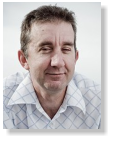

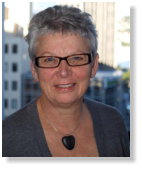
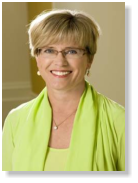



Nicki Babbage
Nicki Babbage has worked in theatre for the past 15 years in various senior
roles. Theatre nursing demands high levels of technical skills and just
keeping pace with the new advancements is challenging. While working at
Wakefield Hospital and in conjunction with Whitireia Polytechnic Nicki has
co-run 2 advanced laparoscopic skills courses for nurses. A feature of this
was the laparoscopic trainers that we had made by Weta workshop. This
initiative earned Nicky Highly Commended in the NZ Private Hospital’s
Innovation Awards. An article detailing this featured in the Nursing Review.
Having spent most of her life in Wellington, Nicky now finds herself a resident in Auckland, a city
with much to explore.
Abstract
14 Days in Papua New Guinea
In October 2011 I spent 2 weeks working as a volunteer in Goroka hospital in Papua New Guinea
as an educational advisor in the operating theatre.
Nursing in PNG is very different to the high tech environment I was used to. The theatre nurses
pack their own swabs, thread their needles with silk and wash their own instruments. Counting is
haphazard and not for all cases. To say I was in a time warp would be an exaggeration as these
practices were before my time.
My role was to suggest things that would make their lives easier, safer and be cost free. The
older nurses saw me as a threat initially and as their first educator I could understand their
resistance. One of the key elements was lack of water. For 2 days surgery was cancelled as there
was no water.
HIV,typhoid, hepatitis and Aids were all prevalent conditions there. “Universal precautions” was
my daily catchphrase. Often staff would take their outside shoes off at the theatre door and then
spend the rest of the day with bare feet.
The highlight of my trip was my day with the Outreach Programme. We travelled by 4 wheel
drive and set up a clinic on an empty field. No medical personnel had come to this area before
and some villagers walked over the hills for 8 hours to see us. Patients waited for hours in the
searing sun to see a doctor/nurse.
It was a challenging and rewarding snapshot of life from another perspective.
Isabel Jamieson
Isabel Jamieson is currently employed by the Christchurch Polytechnic
Institution of Technology (CPIT), School of Nursing, as a senior nursing
lecturer. Isabel is has just completed her PhD at the University of
Canterbury. The title of her thesis was; What are the views of Generation Y
New Zealand Registered Nurses towards nursing, work and career.
Isabel was a co-researcher for the Dedicated Education Unit pilot project
(2006-2008) and more recently (2008-2010) Isabel has been a co-
researcher in a CPIT research team ‘Evaluating the Quality of Workplace
Learning and Undergraduate Student Nurses in Community Settings in New
Zealand using the Clinical Learning Environment Supervision & Teacher survey tool ( CLES+T)’.
Isabel’s clinical background is perioperative nursing, surgical assisting and infection control. She
is a member of the Education Committee of the New Zealand Nurses Organisation Perioperative
Nurses College.
Abstract
Are Generation Y New Zealand Registered Nurses engaged in nursing for the long haul?
Author
Jamieson, Isabel
Senior lecturer, Christchurch Polytechnic Institute of Technology, Christchurch, New Zealand.
Isabel.jamieson@cpit.ac.nz
Background
This doctoral research aimed to establish what motivated Generation Y to choose nursing,
ascertain their future work/career plans and determine what factors influence them to either
remain in, or exit from, the workforce.
Method
During 2009/2010 Generation Y New Zealand Registered Nurses (NZRNs (those born 1980 –
1988) were invited to take part in an on-line survey. Replies were received from 358
respondents.
Result
Overall Generation Y are overwhelming satisfied that they became nurses. They were motivated
to become nurses because of the challenging and exciting work and the ability to help others. A
reasonable starting salary, future earning ability, flexible work hours and opportunities for
promotion were also motivators.
Despite these motivating factors many respondents do not view nursing as a lifelong pursuit. For
a significant number there are few barriers to prevent them from leaving and little pressure to
remain in the profession. They do not feel socially obligated to stay nor do they have a sense of
loyalty to stay in a profession that they have been educated in.
Conclusion
Generation Y NZRNs appear to be engaged with nursing in the short term. However their long
term commitment is less clear. Given the ongoing worldwide shortage of nurses and the costs of
retention and recruitment it is imperative that the profession gains further insight into factors
that retain or lose its young nurses.

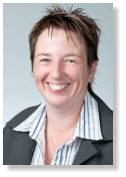
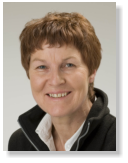
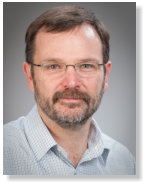




Robyn Guy
For almost 10 years Robyn Guy (Bobby) has worked as a Clinical Nurse Specialist in elective
surgery at Burwood Hospital in Christchurch. This role involves the clinical support of teams
working in major orthopaedic surgical operations, including acute spinal procedures. Over this
time she became concerned about the escalating weight of orthopaedic surgical instrument
sets. Therefore, as the Canterbury West Coast representative on the Perioperative Nurses
College of New Zealand Nurses Organisation National Committee, she welcomed the
opportunity to be involved in investigating a maximum crate weight to be used in a Health and
Safety guidance statement.
Abstract
As a response to a question from a PNC member on the subject, the Canterbury / West Coast
region of the Peri-Operative College of NZNO volunteered to investigate a maximum surgical
instrument crate weight for the Education Committee of Peri Operative College of NZNO to
include in a guidance statement on Health and Safety.
The key objective to endorsing such a weight is to set a figure which minimises the risk of
manual handling injuries for those involved in the transport and management of surgical
instruments / equipment.
This presentation details the Canterbury West Coast group’s work over the past 12-18 months
in determining an “informed” maximum weight. The group used a triangular methodology
–combining a literature review, benchmarking, and collating local objective and subjective data
on the extent of the problem. However prior to any discussion on the issue they did find it was
necessary (through a simple exercise which will be repeated at conference) to ensure that all
interested parties knew what various weights felt like to lift. As well as revealing “that weight”
in this presentation - implications this has for future practice will be acknowledged, leading the
way for further work on these issues.
Dr Trevor FitzJohn
MB BS BMedSci DMRD FRCR FRANZCR
For the past 15 years, Trevor has worked with Swee Tan at the
Vascular Anomalies Clinic in Hutt Hospital, seeing patients for
treatment and review. This clinic is the largest in New Zealand, with
a database of 1,533 patients. Trevor is a member of the
International Society for the Study of Vascular Anomalies (ISSVA).
Trevor’s other special interests are in neuroradiology, nuclear
medicine, PET/CT, MRI, neuro-intervention and bone densitometry.
He is a graduate of the University of Newcastle- upon-Tyne, UK, in
science and medicine; he arrived in New Zealand in 1986.
Trevor is a consultant radiologist at Wellington Hospital and Pacific
Radiology. He is the Chairman of Pacific Radiology Ltd and a director
of the Pacific Radiology Group
Abstract: Treatment of Vascular Malformations
Patients are referred for treatment after being seen at the Vascular Anomalies clinic in Hutt
Hospital. Vascular anomalies affecting infants and children include tumours and malformations.
Vascular malformations are vascular lesions that are present at birth resulting from errors in
vascular morphogenesis. They may be formed from any combination of arterial, capillary,
venous or lymphatic elements with or without direct AV shunts.
This talk will focus on the treatment of Venous & Arterio-Venous malformations in the
Interventional Radiology suite. This involves injection of an embolic agent, frequently alcohol or
small particles, into the malformation to shut down the blood or lymph flow into the
malformation.
Fiona Unaç
Fiona has 19 years experience as a registered nurse working across
a diverse range of specialties. In November 2011 she became the
first member of the perioperative nurses college to be registered as
a New Zealand nurse practitioner. She currently works as an acute
care nurse practitioner across radiology and vascular services at
Hawke’s Bay Regional Hospital.
Abstract: Advancing perioperative nursing practice: Culture,
communication and challenges.
Nurses working across the perioperative continuum are ideally
positioned to develop advanced clinical nursing roles to meet health
targets and to address gaps in services. However, clinical promotion
remains elusive for many experienced perioperative nurses.
This paper focuses on the nursing culture, communication and challenges for advanced
perioperative nursing. It explores current trends in advance nursing practice from a New
Zealand political and social perspective.
I will also draw on some of my personal experiences as I progressed to a nurse practitioner
position. Throughout my nursing career, I have made some good professional choices as well
as some decisions that resulted in missed opportunities. Regardless on where you are
positioned on the career ladder, I hope this paper will re-affirm your career aspirations, and
that you remain 'Freed to care, proud to nurse' (NZNO vision, 2012).
Marie Russell
Marie Russell qualified as an RN in Manchester in the UK in 1991 and
has worked within the perioperative field for 20 years. During her
career Marie has worked throughout the UK in many different
perioperative specialties. She worked as a Head and Neck and Plastic
Surgery Sister at the Royal Marsden Hospital, has experience in
Cardio-Thoracic, Day Surgery, Endoscopy, General, ENT, and Urology
and had a senior post in a regional paediatric hospital. She also
worked as a theatre manager in a large general hospital for 5 years
and completed her MBA.
She participated in the UKs Clinical Governance Development
Program which involved improving the patient journey throughout
the perioperative setting and improving theatre utilization. Her
current role is as Perioperative Nurse Educator for Surgical Services BOPDHB.
She is also Central North Island Regional Representative on PNC national committee and chairs
the PNC education committee.
Abstract – Surgical and Anaesthetic Course (AusMAT)
In 2005, the Australian Government designated Royal Darwin Hospital as the National Critical
Care Trauma and Response Centre, with the intent of enabling the hospital to function as a “…
rapid response , forward receiving platform …. equipped where appropriate, to assess, revive,
retrieve and facilitate the transfer of victims of mass casualty events both locally and
regionally”
The surgical and Anaesthetic course has been delivered several times in Australia to senior
trauma, general and orthopaedic surgeons as part of training for the Australian medical
response teams (AusMAT) for overseas deployment.
The NCCTRC also conduct specialised training courses for AusMAT Team Leaders, Medical Needs
Assessment teams, and courses for general team members.
This presentation gives an over view of the surgical and anaesthetic course and personal
reflections after attending the course as a senior theatre nurse.
